
Evidence
Monthly Employment Data Digest
Monthly employment analysis sets a standard for reliability
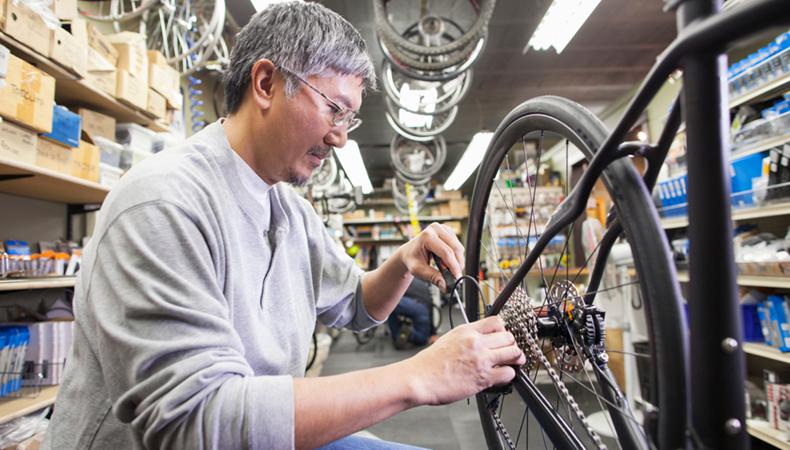
AARP leadership, national media, consumers, policymakers, and think tanks and other institutions that study aging and employment relied on the steady analysis of the Public Policy Institute (PPI) Monthly Employment Data Digest. With relevant, timely insights into the trends affecting people 55 and older, the Digest provided consistent and credible insights. The easy-to-understand summaries examined significant findings from the Bureau of Labor Statistics (BLS) Employment Situation Report through an older-worker lens and often focused on the impact of the COVID-19 pandemic.
PPI expert Jennifer Schramm's monthly blog posts were a must-read, spotlighting the magnitude of the data, and providing context on trends, from the huge wave of resignations to the long-term unemployed and the rising number of job openings. Integrated Communications and Marketing's External Relations team consistently relied on her explanations of the data surrounding older employees and jobseekers, and recent retirees. Sharing the data and analysis with journalists drew attention to the economic and labor issues facing older workers. CNBC, CBS and MarketWatch all cited the information in their reporting during 2021. Additionally, AARP thought leaders highlighted the findings and analysis in presentations and talks.

Evidence
Policy Development and Integration
Listening and exploration supports clear, sound policy guidance and integration
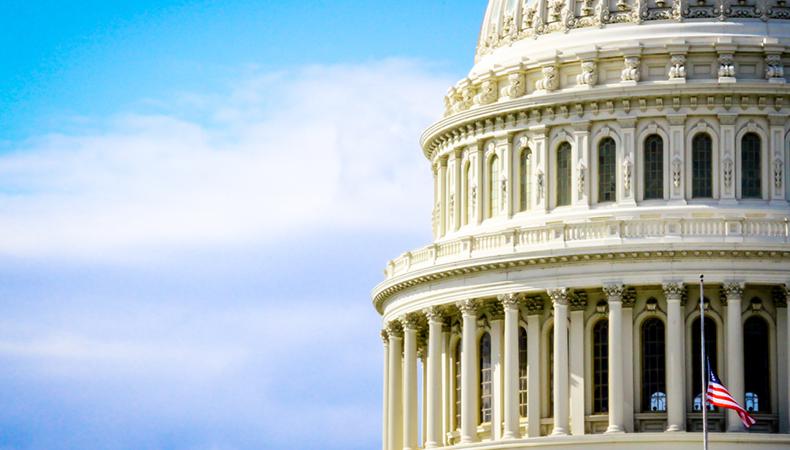
The Office of Policy Development and Integration (OPDI) published a fully updated, forward-thinking Policy Book to guide AARP's work in its strategic impact areas and establish trusted content to keep the organization at the vanguard of issues that shape the lives of Americans as they age. In concluding two policy explorations, on consumer health data and artificial intelligence, OPDI crafted well-reasoned public policies that can foster innovation. These policies also ensure lasting benefits for older adults by underscoring the need for strong protection against discrimination, violations of privacy, and security breaches.
In beginning a policy exploration to address disparities in health and financial resilience, the team completed comprehensive literature reviews, brought in leading thinkers representing the full range of political perspectives for dialogue and input, and commissioned several papers to create a strong evidence base. One paper examined the disparate impact on consumers of the use of credit scores in insurance and other products. Another analyzed new approaches using cultural competence and humility to address disparities in the delivery of health care. Proposals from numerous think tanks, organizations, and companies were analyzed as OPDI collaborated with staff across the national and state offices, volunteers with deep policy expertise, and AARP executive leadership to deliver to the Board of Directors well-reasoned policy recommendations.

Evidence
Fighting to Lower Prescription Drug Prices
Leveraging PRI's data and insights in a call for meaningful change
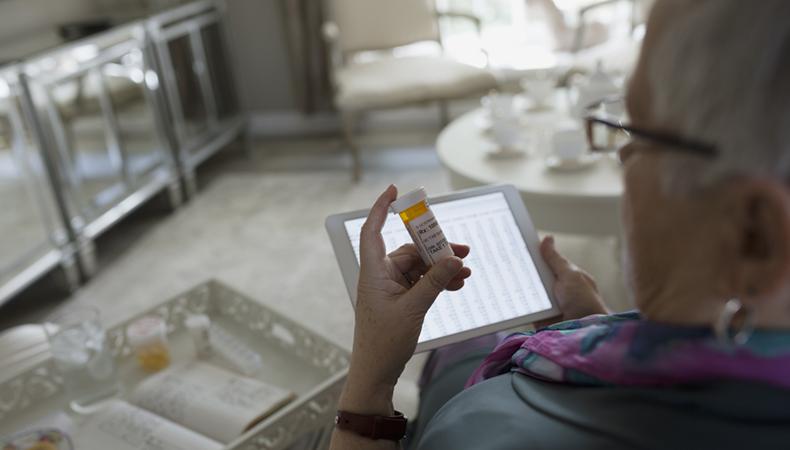
As the political environment became attuned to the out-of-control rising costs of prescription drugs, PRI was armed with years of information to fuel AARP's advocacy efforts for change.
Since 2004, the Rx Watchdog report series produced by the Public Policy Institute (PPI) has tracked manufacturer price changes for widely used prescription drugs. The resulting wealth of data and analysis have been widely cited in federal and congressional reports, and consistently utilized in AARP's national and state-level advocacy efforts around high prescription drug prices.
In addition to the PPI price-tracking data, AARP Research's surveys offered an important examination of public opinion about high drug prices and potential solutions. AARP Research released survey data showing most Americans ages 50 and older rely on prescription drugs for their health, yet many worry about their ability to pay for them. Most (87 percent) respondents also believe lawmakers should take action to make medications more affordable.
To support national and state-level advocacy efforts, PRI collaborated with the Community State and National Affairs (CSN) group's Campaigns and Government Affairs' Health and Family teams on a variety of research and analyses to support the Stop Rx Greed (now Fair Rx Prices Now) campaign. Additionally, PPI coordinated with CSN to strategically time the publication of four reports on the prescription drug reform debate. And during debate on the federal Build Back Better legislation, PRI was ready with timely analysis and useful surveys supporting Medicare negotiation for drug prices, creating a hard out-of-pocket cap under Medicare Part D, and penalizing drug companies for price increases that exceed inflation.
At the state level, CSN leveraged PPI's data analysis, producing fact sheets for every state, the District of Columbia, and Puerto Rico on the impacts of high prescription drug prices. Finally, PPI's Leigh Purvis provided expert testimony during state legislative hearings and tele-townhall meetings, and other events across the country, taking the message directly to the public.
As a result, AARP successfully engaged in a complex and controversial debate over high prescription drug prices, and was an objective resource for policymakers, the media, and AARP members.

Knowledge
Foresight 50+
Foresight 50+ empowers decisionmakers with high-quality data

In co-creating the Foresight 50+ panel with the National Opinion Research Center at the University of Chicago, AARP Research and its Research Services team found a way to amplify the voice of the fastest-growing age group in the country: adults 50 and older. This groundbreaking product was designed to give researchers an accurate understanding and representation of the growing and influential demographic. It also provides a revenue stream for AARP. And importantly, the data garnered from the panel provided insights into various segments of the diverse 50-plus population for internal purposes, offering nuance to inform AARP's advocacy efforts, key conversations, decisions, and actions.
The University of Michigan's National Poll on Healthy Aging, sponsored by AARP, was one of the first to use the panel. And in its first six months, the panel conducted more than 30 projects for additional clients ranging from businesses to researchers.
Internally, Foresight 50+ provided data featured in five of the top 10 most popular AARP Research reports in 2021, including the Tech Trends study, the Home and Community Preferences survey, and the Women, Work, and Road to Resilience study. It also was used to conduct the monthly ATOM tracking study, helping AARP assess brand awareness and affinity.

Knowledge
Member Opinion Survey
Understanding the concerns and experiences of AARP Members informs clear decision-making
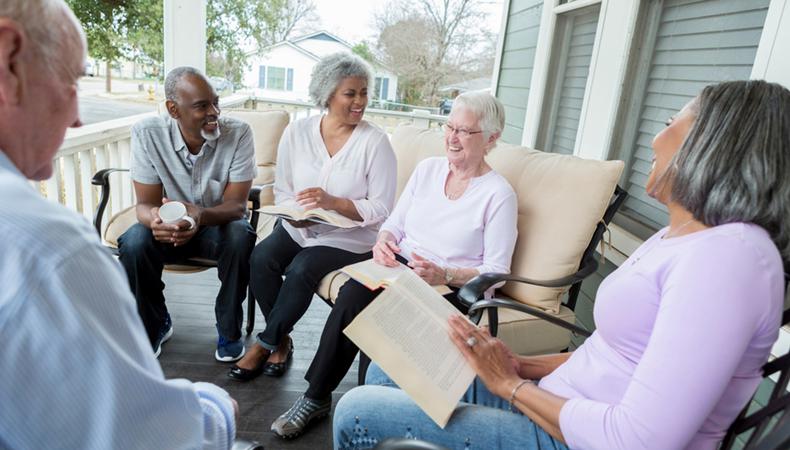
With robust detail and precision, the AARP Member Opinion Survey (MOS) is a tool that guides policy decisions, enhances marketing and communications efforts, and informs organizational strategies. Produced by AARP Research and last conducted in 2016, the 2021 update delineated the rapidly changing experiences of AARP members as they navigated the ongoing COVID-19 pandemic. Over the next few years, these results will help AARP stay focused on important member experiences and expectations.
The largest single survey of AARP members and fielded from May to August, the 2021 MOS collected data from approximately 20,000 respondents. The AARP Research Membership, Organization and Brand team drilled down into various population segments, gleaning perspectives that reveal actionable trends. Filtering the data by age, race and ethnicity, political affiliations, and geographical region or state allowed AARP to better navigate key policies and actions. From the 2021 MOS, AARP has a better understanding of membership levels for key population groups such as African American and Latino people, as well as actual membership levels when considering that spouses are given an automatic membership. The Data Analytics Group (DAG) and Enterprise Performance Management and Business Analysis team also used the survey to build models allowing the enterprise to target communications to members on topics like caregiving, fraud, and careers.
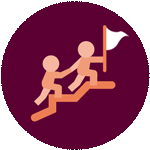
Leadership
Health Equity through Nursing
Engaging stakeholders to advance health equity by supporting a more diverse nursing workforce
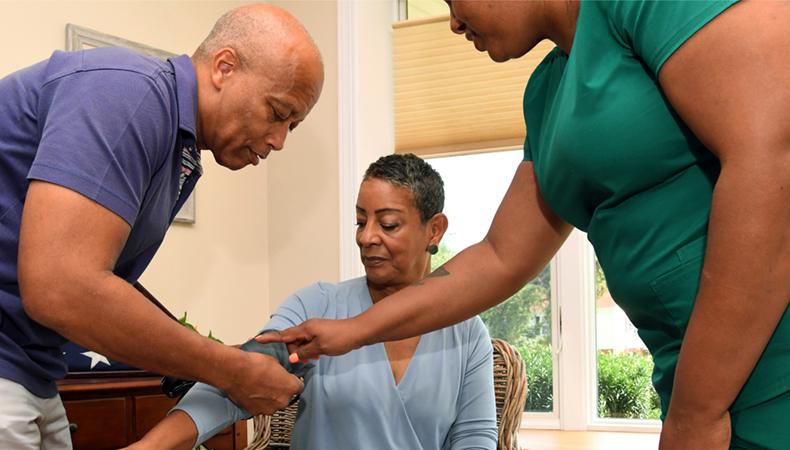
The Future of Nursing: Campaign for Action—an initiative of AARP Foundation, AARP, and the Robert Wood Johnson Foundation that is run by PPI's Center to Champion Nursing in America—produced three virtual forums on policies and practices aimed at advancing health equity through nursing. Consumers, nurses, businesses, unions, social justice organizations, and health care organizations convened for the two-and-a-half-hour sessions, which were produced in partnership with AARP's Office of Diversity, Equity and Inclusion and PRI's Thought Leadership team. The forums addressed the need for a more diverse nursing workforce, nursing careers to achieve financial security, structural racism in nursing, and how nursing supports individuals, families, and communities. It prepared stakeholders to engage in the National Academy of Medicine's consensus study report, The Future of Nursing 2020-2030: Charting a Path to Achieve Health Equity, which will be released soon.
Over 1,000 participants heard from experts who talked about building a diverse, health equity-minded workforce and showcased nursing as a career ladder for traditionally underrepresented populations. The forums led to several ideas to ensure nursing schools have the financial and educational resources to improve health equity. These included co-sponsoring an upcoming webinar with the National Council on State Boards of Nursing to help graduating students prepare for the relatively new licensing exam and working with the Health Resources and Services Administration to hold grant-writing workshops aimed at under-funded programs. As a result of the event, Leapfrog decided to incorporate health equity as a quality measure and Rush University Health System tapped into the forum's resources to bolster its diversity and inclusivity efforts.

Leadership
United Nations and Digital Literacy
Engaging the United Nations in promoting digital literacy among older adults

Harnessing a strong, long-standing relationship with the United Nations (UN), the AARP International team leveraged our AARP-UN Briefing Series to deepen ongoing conversations on how to bring digital technology to older adults effectively, equitably, and safely.
Driven by the enterprise Plan to Win strategy on digital equity and infused by insights from AARP Research, the briefing was hosted in collaboration with the UN Department for Economic and Social Affairs, the International Telecommunications Union (ITU), and the UN Human Rights Special Procedures. The exchange engaged nearly 5,000 participants and focused on the role digital technologies play in social development and well-being. The conversation explored how to ensure the inclusion of older people's needs, interests, and perspectives on digital issues. The lack of broadband infrastructure, digital skills, and age-inclusive design were identified as major barriers. This ongoing dialogue continued at the UN World Data Forum and during the UN International Day of Older Persons, which, at AARP's suggestion, centered on digital equity.
Our global voice and credibility were reinforced when the UN Secretary General's Special Envoy on Technology asked AARP to serve as lead for the Network of Networks on Older Persons, with the President of the UN General Assembly inviting AARP to present on the digital divide and older persons at the 76th session of the UN General Assembly. The ITU's decision to focus on digital technologies for older persons during the 2022 World Telecommunication and Information Society Day solidified the efforts to spotlight digital equity.
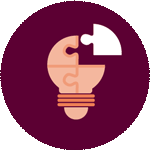
Collaboration
Growing with Age
Growing with Age platform makes waves in promoting multi-generational workforces

Working with the Organization for Economic Cooperation and Development (OECD) and the World Economic Forum, AARP is encouraging employers to embrace multigenerational workforces by actively building age-inclusive organizations. This effort is centered around the creation of the interactive online platform Growing with Age.
Growing with Age received significant recognition as one of Fast Company's 2021 World Changing Ideas. The platform is a continuation of the Learning, Living, and Earning Longer Collaborative initiative, which has attracted 58 global employers representing over 2.5 million employees and more than $1 trillion in annual revenue.
Changing demographics are creating both a workplace and marketplace that is more age-diverse than ever before. Many companies now have four or five generations working side by side. Employers that take the right steps can leverage the multigenerational workforce as a key to success. Developed by the AARP International and Thought Leadership teams, Growing with Age is a response to the increase in age diversity seen in both the workplace and marketplace. The interactive digital platform helps employers identify strengths and reform weaknesses by providing steps for turning age diversity into economic success.

Collaboration
Livability Index and REALTORS®
Teaming up with REALTORS® for a valuable lesson in livability
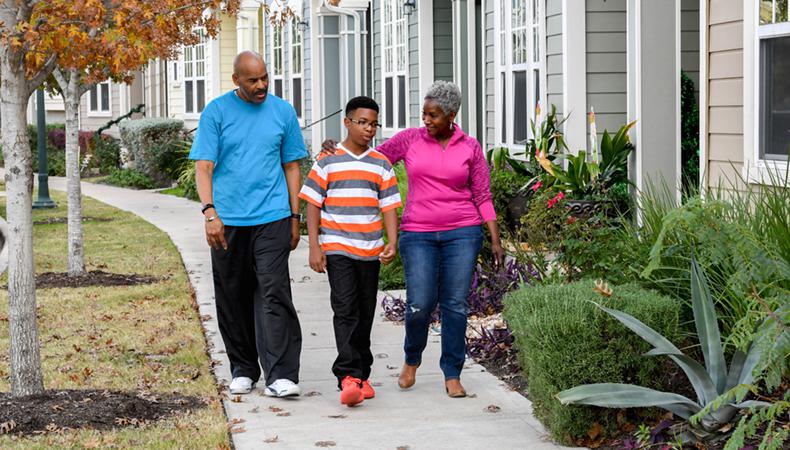
Building on an existing relationship with the National Association of REALTORS®, AARP integrated its Livability Index scores into the Realtors Property Resource® platform to help drive informed age-friendly housing decisions. Whether the topic is rental properties or the homebuying process, the goal is to engage REALTORS® and their clients to help them understand the vital impact transportation, health, civic engagement, and other factors play in creating a livable community.
Since the integration, REALTORS® and their clients have viewed AARP-generated Livability Index Scores more than 5.8 million times. Further marking the success of the partnership, REALTORS® have generated more than 1.2 million reports featuring livability scores. The Livability Index's wealth of information, developed and maintained by the Public Policy Institute, gives neighborhood-level detail for assessing and educating communities about lifetime housing needs, creating a path for making informed long-term decisions. With the Livability Index's robust national data broken down by zip code, REALTORS® can combine the care and attention they provide clients in finding a home with the powerful work AARP has achieved in promoting and identifying livability standards.

Collaboration
BankSafe
Preventing financial exploitation through industry partnerships
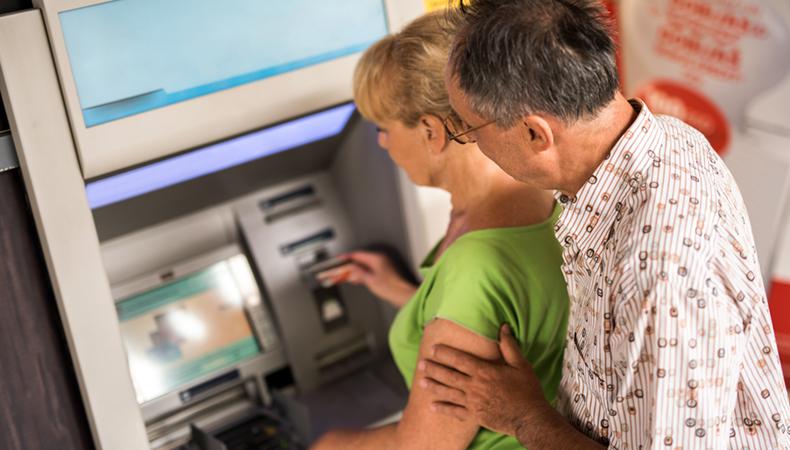
The BankSafe platform built on its ongoing success in preventing financial exploitation of older adults by training frontline staff at financial institutions and expanding into the retail and non-traditional sectors. The program also continued to support family caregivers and help those with dementia by empowering and encouraging a network of 1,000 industry partners—including some of the largest financial institutions in the country—to voluntarily adopt AARP-recommended policies and practices. These banks, serving more than 200 million Americans, include Chase, Bank of America and TD Bank.
BankSafe also tapped into its relationship with the Federal Trade Commission (FTC) to connect with retailers and industry players to address exploitation related to the financial products and services sold in the retail sector. Through an industry pilot that included surveys, and interviews with more than 30 national and regional retailers, the Public Policy Institute identified key insights for how to apply the BankSafe training approach in the retail environment. In fact, in early 2022, both Best Buy and Walgreens signed on to be among the inaugural retailers committed to completing the AARP training with their frontline staff.
Beyond expanding into the retail sector, BankSafe continued its initial focus to train financial industry professionals with banks, credit unions, investment firms through its gamified, self-paced program. The training was updated in 2021 to include new interactive scenarios and activities.
BankSafe continues to meet its intended goal of preventing the financial exploitation of older adults by teaching frontline workers to spot, prevent and report it. Nearly 1,000 financial organizations have participated in the BankSafe training since it launched in 2019 and those trained have stopped nearly $110 million from being stolen from older adults. Additionally, 94 percent of people trained by BankSafe say they have a more favorable perception of AARP as a result of the program.
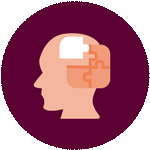
Solutions
Improving Access to Health Insurance Coverage
Improving access to health insurance coverage is a multipronged effort, from policy advocacy to on-the-ground outreach

Research clearly and repeatedly reveals that many people who are eligible for health insurance, or related financial assistance, do not enroll. Using this knowledge to improve lives required the Public Policy Institute (PPI) to not only focus on supporting advocacy work for better policy implementation, but also create content and solutions for direct-to-consumer education and outreach. Through the enterprise health care plan, PPI sought to close the gap by developing education and outreach activities so consumers can directly benefit from AARP's successful advocacy efforts to increase financial assistance for Affordable Care Act (ACA) insurance coverage for adults ages 50-64.
A pilot educational effort in nine states successfully drove eligible adults to seek newly expanded financial assistance and support under the ACA. During that special enrollment period, nearly 1 million adults ages 50-64 enrolled in more affordable coverage in the ACA. The program focused on multicultural communities and, given the positive response, will expand in 2022.

Solutions
Six Pillars of Brain Health
Teaching the six pillars of brain health through an easy-to-use tool kit available nationwide

To better disseminate the message that it is never too late to take charge of your brain health, PRI’s Policy and Brain Health team developed and rolled out a set of ready-to-use workshop materials. Based on the work of the Global Council on Brain Health, the Six Pillars of Brain Health Do-It-Yourself Toolkits are designed to help state offices organize volunteer-led workshops. More than 100 virtual workshops were held in at least 21 states in coordination with AARP state offices this past year.
The six pillars—be social, engage your brain, manage stress, ongoing exercise, restorative sleep, and eat right—are part of a broader education effort encouraging people to make practical behavioral changes to support their brain health. In making AARP a “go-to” source for resources on brain health, presenters are guided through leading either a virtual or an in-person 30-minute or 60-minute event. With fresh images, updated resources and infographics, integrating information about Staying Sharp, the toolkit aims to provide the most current information on learning how to live a brain-healthy lifestyle.

Solutions
Rural Health Disparities
Understanding the rural health experience through a lens of racial and ethnic disparities

Seeing a dearth of studies analyzing the differences between rural and urban health care experiences done through a lens of racial and ethnic disparities, the Public Policy Institute (PPI) and AARP Research dug into the topic, resulting in insights that illuminated inequalities and how they show up in everyday life. While it's well known that rural areas face longstanding challenges of accessing health care and increased health care disparities, this foundational work provided important data into the complexities of the topic that will fuel future advocacy and policy decisions.
PPI's report looked at rural versus urban health care access, health behaviors, and health conditions. Among other findings, the report found that adults ages 50 to 64 living in rural areas were more likely to forgo medical care due to cost than those living in urban areas (15 percent versus 13 percent). Their analysis also dug into racial disparities and found that living in a rural area may exacerbate racial health disparities.
To gain further insights into the health behaviors of mid-life and older adults living in rural areas, AARP Research conducted a survey of rural area residents ages 40 and older. The results show that nearly one-third of rural-living adults ages 40 and older had to delay or forgo needed medical care in the previous two years, with those in fair to poor health more likely to delay or skip care.
PRI's research and policy experts underscored the need for more work in this area, especially when it comes to the intersection of rural health with technology barriers. Speaking at the e-Health Initiative's Digital Health Equity Summit, AARP Research's Terry Keenan highlighted how technology barriers can exacerbate health access issues. She emphasized how practices and policies may need to change to ensure existing inequities are not exacerbated in an increasingly digitized environment.